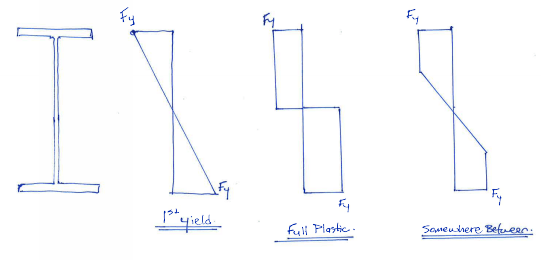ILLINI99
Structural
- Aug 19, 2010
- 11
I am looking for a book that gives a good example of plastic analysis for a beam. What I am specifically looking for is a single span beam with a fixed end and a pinned end with a point load that is large enough to partially yield the section. Does anyone have a good reference, as I have not found anything helpful.
Thanks in Advance.
Thanks in Advance.



